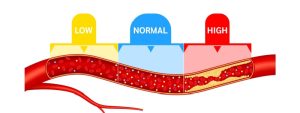Maintaining healthy cholesterol levels prevents heart disease and other cardiovascular conditions. While diet plays a significant role, regular exercise is equally important in managing cholesterol. Physical activity can help lower “bad” LDL cholesterol, raise “good” HDL cholesterol, and improve overall heart health. This blog post will explore the benefits of regular exercise for cholesterol control and provide practical tips for incorporating physical activity into your daily routine.
Understanding Cholesterol
Cholesterol is a fatty substance in your blood that your body needs to function properly. However, too much cholesterol can lead to plaque buildup in your arteries, increasing the risk of heart disease and stroke. There are two main types of cholesterol:
- Low-Density Lipoprotein (LDL): Often called “bad” cholesterol because it can lead to plaque formation in your arteries.
- High-Density Lipoprotein (HDL): “good” cholesterol because it helps remove LDL cholesterol from your arteries, reducing the risk of heart disease.
How Exercise Affects Cholesterol Levels
- Lowers LDL Cholesterol: Regular physical activity can reduce the amount of LDL cholesterol in your bloodstream. Exercise stimulates enzymes that help move LDL from the blood to the liver, where it can be processed and eliminated from the body.
- Raises HDL Cholesterol: Exercise increases your blood’s HDL cholesterol level. Higher HDL cholesterol levels are associated with a lower risk of heart disease because HDL helps remove excess cholesterol from your arteries.
- Reduces Triglycerides: Triglycerides are another type of fat in the blood. High levels of triglycerides can increase the risk of heart disease. Regular exercise helps lower triglyceride levels, further contributing to cardiovascular health.
- Improves Weight Management: Being overweight or obese is a risk factor for high cholesterol. Exercise helps burn calories and build muscle, aiding in weight loss and maintenance. Achieving and maintaining a healthy weight can improve your cholesterol levels.
- Enhances Overall Heart Health: Physical activity strengthens the heart muscle, improves blood circulation, and reduces the risk of developing other conditions associated with high cholesterol, such as hypertension and diabetes.
Types of Exercise for Cholesterol Control
- Aerobic Exercise: Walking, jogging, cycling, and swimming are excellent for lowering LDL cholesterol and raising HDL cholesterol. Aim for at least 150 minutes of moderate-intensity aerobic exercise per week or 75 minutes of vigorous-intensity exercise.
- Strength Training: Resistance exercises, such as lifting weights or using resistance bands, can help improve muscle mass and metabolism, contributing to better cholesterol levels. Include strength training exercises at least twice a week.
- Flexibility and Balance Exercises: While these exercises, such as yoga and stretching, may not directly affect cholesterol levels, they improve overall fitness and reduce the risk of injury, making it easier to maintain a regular exercise routine.
Practical Tips for Incorporating Exercise
- Start Slow: If you’re new to exercise, start with low-impact activities like walking or swimming. Gradually increase the intensity and duration of your workouts as your fitness level improves.
- Set Realistic Goals: Establish achievable exercise goals based on your current fitness level. Gradual progress can help you stay motivated and prevent burnout.
- Find Activities You Enjoy: Choose exercises that you find enjoyable to make it easier to stick with your routine. Whether dancing, hiking, or playing a sport, enjoyment increases the likelihood of consistency.
- Make it Social: Exercising with a friend or joining a fitness group can provide motivation and accountability, making it more likely that you’ll stick with your exercise plan.
- Incorporate Activity into Daily Life: Look for opportunities to be active throughout the day. Take the stairs instead of the elevator, walk or bike to work, and take breaks to move around during long periods of sitting.
Regular exercise is a powerful tool for controlling cholesterol and improving heart health. Physical activity can significantly reduce the risk of heart disease by lowering LDL cholesterol, raising HDL cholesterol, and reducing triglycerides. Incorporating various exercises into your routine, setting realistic goals, and finding enjoyable activities can help you maintain a consistent and effective exercise program. Always consult your healthcare provider before starting any new exercise regimen, especially if you have existing health conditions. Regular exercise and a heart-healthy lifestyle allow you to control your cholesterol and enhance your overall well-being.
The team at Care Net Consultants wish you a happy and active day!




